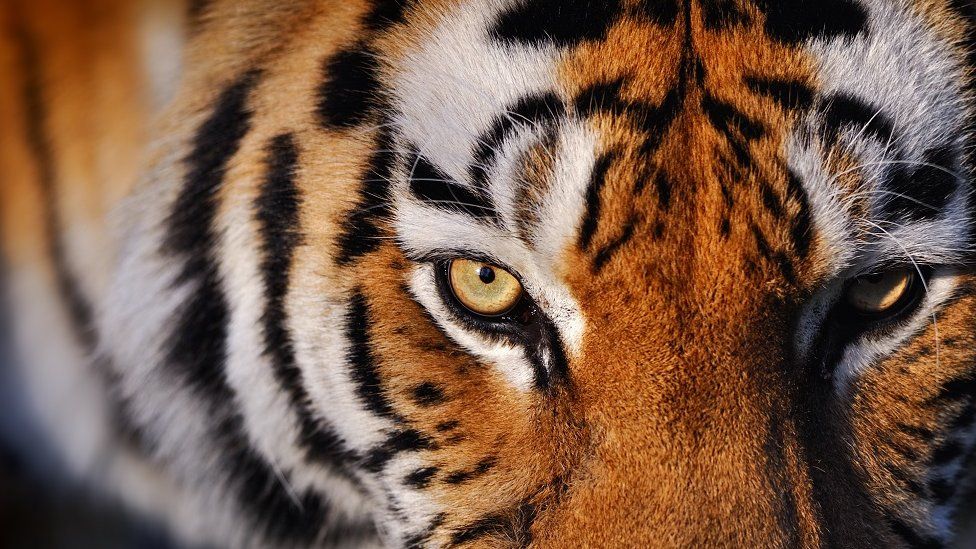ARTICLE AD BOX
 Image source, Freder
Image source, Freder
The Siberian tiger is listed in the IUCN red list of threatened species
Almost half of the earth's animal species are currently declining, according to research led by Queen's University Belfast (QUB).
The study examined population densities of more than 70,000 animals and researchers say it is the most comprehensive record to date.
It found 48% of species on earth are currently undergoing population declines, with less than 3% increasing.
Researchers said it was a drastic alert on the global erosion of biodiversity.
The research, which has been published in the Biological Reviews journal, was led by PhD student Catherine Finn and Dr Daniel Pincheira-Donoso from the School of Biological Sciences at QUB, and Dr Florencia Grattarola from the Czech University of Life Sciences, Prague.
It warns that global erosion of biodiversity caused by human industrialisation is "significantly more alarming" than previously thought.
The study describes the biodiversity crisis as one of "the most pressing challenges to humanity for the coming decades" that threatens the functioning of ecosystems life depends on, the spread of diseases and the stability of the global economy.
Image source, Getty Images
Image caption,With more than 70,000 species assessed, this research is the most comprehensive of its kind
'Drastic alert'
It is normal for species to evolve and become extinct over time - 98% of all species that have ever lived are now extinct.
However, the extinction of species is now happening between 100 and 1,000 times more quickly than scientists would expect., according to the Natural History Museum.
As a result, many scientists warn humans could be causing the "sixth mass extinction" on earth.
The extent of extinction crisis is traditionally measured by "threat conservation categories".
The International Union for Conservation of Nature (IUCN) has kept a "red list" of threatened species since 1964.
More than 150,000 species have been assessed, and, based on their method, 28% are considered to be threatened with extinction.
The researchers from the Queens' study undertook a different method of analysis by examining population trends and found the magnitude of the extinction crisis is considerably more severe than shown by traditional measures.
Using their method, researchers determined that 33% of species considered "safe" by the IUCN are in fact declining towards risk of extinction.
Dr Pincheira-Donoso said the new method "provides a clearer picture" that traditional approaches cannot offer.
"Our work is a drastic alert about the current magnitude of this crisis that has already devastating impacts on the stability of nature as a whole, and on human health and wellbeing."
What is biodiversity and why is it important?
Biodiversity is the variety of all life on earth - animals, plants, fungi and micro-organisms like bacteria.
Animals and plants provide humans with everything necessary for survival - including fresh water, food, and medicines.
However, humans cannot get these benefits from individual species - a rich variety of animals and plants must work together.
Image source, Getty Images
Image caption,An estimated 40% of amphibians face extinction
Plants are also very important for improving the physical environment: cleaning the air, limiting rising temperatures and providing protection against climate change.
Mangrove swamps and coral reefs can act as a barrier to erosion from rising sea levels.
Common trees found in cities such as the London plane or the tulip tree, are excellent at absorbing carbon dioxide and removing pollutants from the air.

 1 year ago
32
1 year ago
32








 English (US) ·
English (US) ·